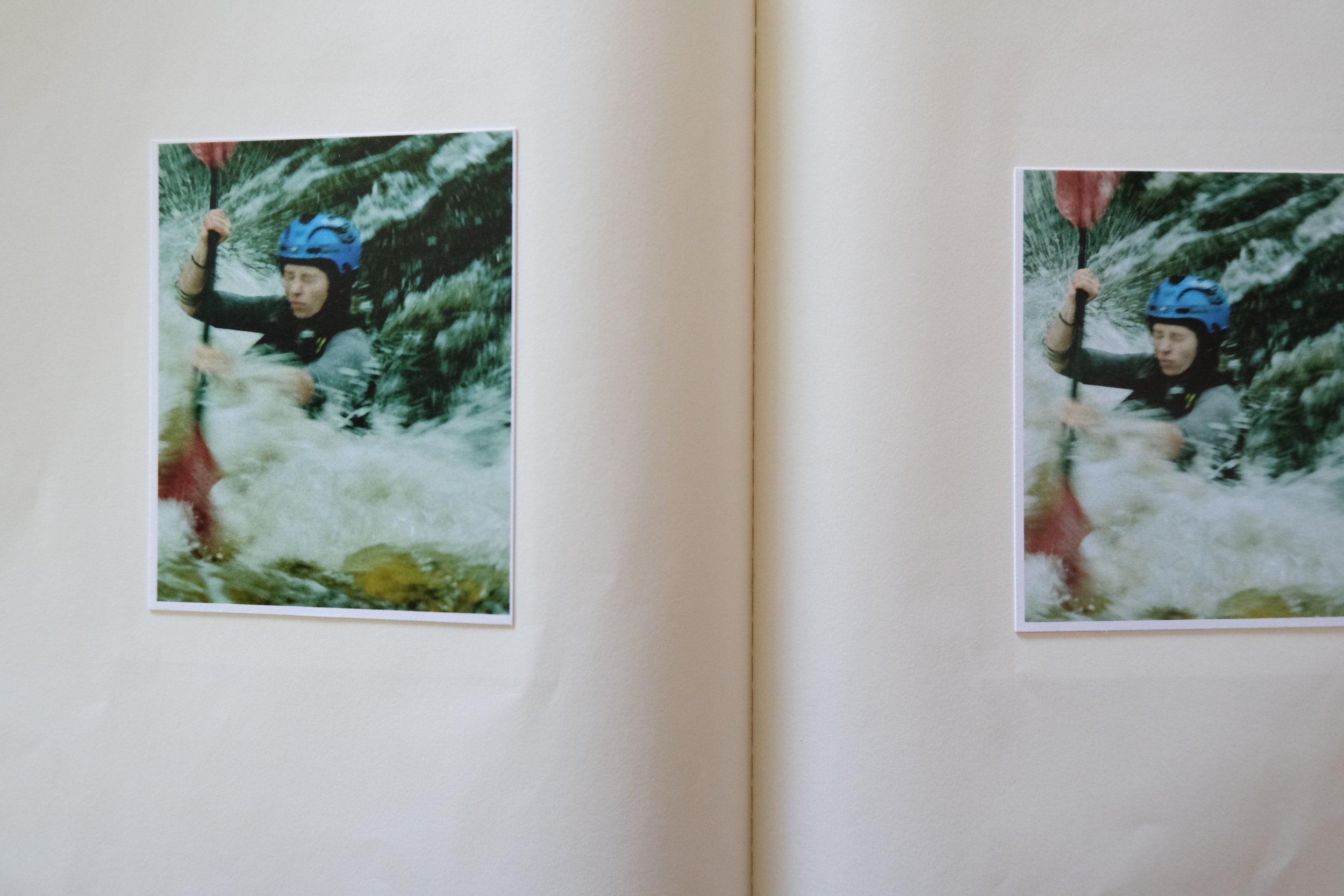Cole Barash on 'Ecosystems'
Prairie: Are the works included in ‘Ecosystems’ from a specific series?
Cole Barash: Yes, this collection represents an ecosystem of ideas, thoughts, emotions, images, and projects. It is a culmination of three different series of works, each at varying stages of development. Traditionally, I work in a singular form with a project, focusing on one idea or place, typically installed on the wall or in book form. I thought it would be interesting to explore them in conversation: what are the similarities, what are the differences? This approach is particularly insightful when a series is still being developed and explored, whether in early or late stages. The works are in different places—some more exposed and vulnerable, others more structured and defined.
The first series, When the Wind Blows North, consists of images I have been creating in conversation with my father since he passed away in 2020. During my solo wilderness expeditions retracing some of his journeys, I feel most connected to him.
The second series, Ecosystems, explores how we navigate, interact with, consume, protect, damage, and value water—an element that is constantly changing in our world.
Prairie: Do you have any ongoing themes in your work?
Cole Barash: In my practice, I examine the human relationship with Earth, the landscape, and how we exist on it. I further explore societal challenges such as providing for a family, the weight of it all, pure happiness, and community.
Prairie: Can you detail the materials used, any new ones, and how they come together?
Cole Barash: Being traditionally trained as a photographer can sometimes feel limiting, as the final output of a print must conform to a certain ratio (rectangle or square) and is two-dimensional. This limitation can be frustrating since we experience life in three dimensions. I want to communicate certain ideas through a three-dimensional perspective as well.
I exist between two parallels: one, appreciating and contributing to the lineage of documentary photography (e.g., Walker Evans, Robert Adams), and the other, pushing material into layers or tangibility. I am interested in breaking the boundaries of traditional photography installations.
I began working with tent material, which is used for survival in the wilderness. Printing on this material was freeing and new. I then explored further, considering how some images represent family, connecting me to my childhood. My mother, a landscaper, often used burlap material to move earth or other materials, which intrigued me as a substrate.
Finally, having spent much of my life on and at the sea, I gravitated towards fiberglass, typically used to repair boats or surfboards.
These three materials—tent fabric, burlap, and fiberglass—are human-made to enhance our interaction with nature. Tents allow deeper and longer wilderness exploration, burlap moves pieces of earth, and fiberglass patches where nature (water) always wins.
Prairie: Could you share your process, including the inks used for printing?
Cole Barash: The UV ink substrate process usually starts with text—pen and paper outputting. Then I move to making compositions and recording them photographically, usually on film. Next, I build the frames and print on a variety of substrates using UV ink. The prints are stretched like canvas around a painting. Sometimes, I cut them up and revisit them for further refinement.
Prairie: Do the themes relate to particular landscapes or your residency in North Carolina?
Cole Barash: The themes relate to my life, America, family, the natural world, and human existence. During my Prairie residency in NC, I continued to think largely about how humans interact with water. This vast theme has been a constant source of interest, documented through visual observations, such as the water fountain image. Additionally, I reflected on construction and destruction, as well as providing for a family and what that means in our society. The "Pounding the Pavement" piece, which I had been conceptualizing for over a year, came to fruition during my residency.
Prairie: What's the significance of repeated images, for example, the flower?
Cole Barash: The most significant things in my life are naturally made. When my father passed away, one of the last things he mentioned was "Victory"—not the win, but the place. Victory is a very small area in the Northeast Kingdom of Vermont, filled with beautiful bogs and orchids. I found a similar bog nearby and visited it during the bloom of this orchid. To me, this represents rebirth or continuation.









